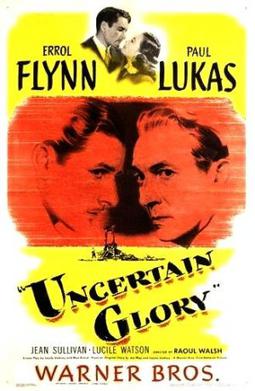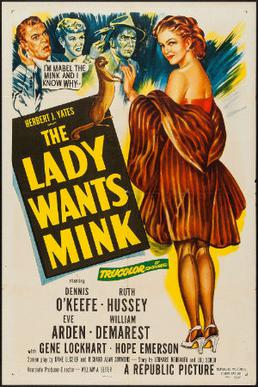Related Research Articles

Charles Van Dell Johnson was an American actor and dancer. He had a prolific career in film, television, theatre and radio, which spanned over 50 years, between 1940 and 1992. He was a major star at Metro-Goldwyn-Mayer during and after World War II, known for his upbeat and "all-American" screen persona, often playing young military servicemen, or in musicals.

Walter Sydney Vinnicombe was an English actor and comedian. He worked in film, television and theatre.

Faye Margaret Emerson was an American film and stage actress and television interviewer who gained fame as a film actress in the 1940s before transitioning to television in the 1950s and hosting her own talk show.

John Francis Regis Toomey was an American film and television actor.

Robert William Armstrong was an American film and television actor remembered for his role as Carl Denham in the 1933 version of King Kong by RKO Pictures. He delivered the film's famous final line: "It wasn't the airplanes. It was beauty killed the beast."

George Meeker was an American character film and Broadway actor.
Rose of Washington Square is a 1939 American musical drama film, featuring the already well-known popular song with the same title. Set in 1920s New York City, the film focuses on singer Rose Sargent and her turbulent relationship with con artist Barton DeWitt Clinton, whose criminal activities threaten her professional success in the Ziegfeld Follies.
Gang Busters is a 1942 Universal movie serial based on the radio series Gang Busters.

Cee Pee Johnson was an American jazz composer, bandleader, singer and multi-instrumentalist.

Joseph A. Creaghan was an American film actor. He appeared in more than 300 films between 1916 and 1965, and notably played Ulysses S. Grant nine times between 1939 and 1958, most memorably in Union Pacific and They Died with Their Boots On.
The Housekeeper's Daughter is a 1939 comedy/drama film directed and produced by Hal Roach. The film stars Joan Bennett, Adolphe Menjou and John Hubbard. The screenplay was written by Rian James, Gordon Douglas, Jack Jevne and Claude Martin, based on a novel by Donald Henderson Clarke.

Lady Gangster is a 1942 Warner Bros. B picture crime film directed by Robert Florey, credited as "Florian Roberts". It is based on the play Gangstress, or Women in Prison by Dorothy Mackaye, who in 1928, as #440960, served less than ten months of a one- to three-year sentence in San Quentin State Prison. Lady Gangster is a remake of the pre-Code film, Ladies They Talk About (1933). Jackie Gleason plays a supporting role.

The Falcon Takes Over, is a 1942 black-and-white mystery film directed by Irving Reis. Although the film features the Falcon and other characters created by Michael Arlen, its plot is taken from the Raymond Chandler novel Farewell, My Lovely, with the Falcon substituting for Chandler's archetypal private eye Philip Marlowe and the setting of New York City replacing Marlowe's Los Angeles beat. The B film was the third, following The Gay Falcon and A Date with the Falcon (1941), to star George Sanders as the character Gay Lawrence, a gentleman detective known by the sobriquet the Falcon.

I Killed That Man is a 1941 American mystery film directed by Phil Rosen and starring Ricardo Cortez, Joan Woodbury and Iris Adrian. Produced by the King Brothers for release by Monogram Pictures, it is a remake of the 1933 film The Devil's Mate which Rosen had also directed.

Uncertain Glory is a 1944 American World War II crime drama film, directed by Raoul Walsh and starring Errol Flynn and Paul Lukas.

The Big Shot (1942) is an American film noir crime drama film starring Humphrey Bogart as a crime boss and Irene Manning as the woman he falls in love with. Having finally reached stardom with such projects as The Maltese Falcon (1941), this would be the last film in which former supporting player Bogart would portray a gangster for Warner Bros..

The Great Redeemer is a 1920 American silent Western film co-directed by Maurice Tourneur and Clarence Brown and starring House Peters, Marjorie Daw, Jack McDonald, and Joseph Singleton.

Bert Moorhouse was an American character actor whose career began at the very tail end of the silent era, and lasted through the mid-1950s.

The Lady Wants Mink is a 1953 American comedy film directed by William A. Seiter and written by Dane Lussier and Richard Alan Simmons. The film stars Dennis O'Keefe, Ruth Hussey, Eve Arden, William Demarest, Gene Lockhart and Hope Emerson. The film was released on March 30, 1953, by Republic Pictures.

City Without Men is a 1943 American film noir crime film directed by Sidney Salkow and starring Linda Darnell, Edgar Buchanan and Michael Duane. It was released by Columbia Pictures on January 14, 1943. A group of women lives in a boarding house near a prison where the residents are the wives of the prison inmates.
References
- ↑ T.M.P. [pen name of Thomas M. Pryor] (May 8, 1942). "Movie Review: Murder in the Big House at the Palace". The New York Times . Retrieved January 20, 2015.
- ↑ No byline (May 24, 1942). "Current Attractions at Local Theatres; PARK — "A DESPERATE CHANCE FOR ELLERY QUEEN"". Reading Eagle . Retrieved January 20, 2015.
- ↑ No byline (August 7, 1943). "At Community". Lewiston Evening Journal . Retrieved January 20, 2015.
- ↑ No byline (July 7, 1942). "Murder Movie Opens at Hialeah Theater". Miami Daily News . Retrieved January 20, 2015.
- ↑ No byline (June 18, 1942). "GRANADA THEATRE". The Daily Times, Beaver and Rochester . Retrieved January 20, 2015.
- ↑ "Van Johnson". IMDb. Retrieved 2019-09-26.
- ↑ Spiro, J. D. (November 7, 1948). "Farewell to the Bobby Socksers; Teen Agers' Idol Is Giving Them Up for a More Substantial Career". The Milwaukee Journal . Retrieved January 20, 2015.
- ↑ Graham, Sheilah (September 30, 1945). "All Around Hollywood Town". The Milwaukee Journal . Retrieved January 20, 2015.
- ↑ no byline (February 2, 1946). "On the Silver Screen MAJESTIC THEATRE Monday and Tuesday "YOLANDA AND THE THIEF" Fred Astaire, Lucille Bremer; Wednesday and Thursday "BORN FOR TROUBLE" Van Johnson, Faye Emerson". The Gettysburg Times . Retrieved January 20, 2015.
- ↑ "Elliott Roosevelt Will Wed Film Actress Faye Emerson" (The Milwaukee Journal, November 29, 1944, page 1)
- ↑ "Conflicting interests Cause Elliott and Faye to Separate" (St. Petersburg Times, September 13, 1949, page ten)
- ↑ No byline (April 21, 1942). "Just Smilin' at Murder (black-and-white newspaper photograph of Van Johnson and Faye Emerson from Murder in the Big House". Pittsburgh Post-Gazette . Retrieved January 20, 2015.
- ↑ Newspaper poster for Murder in the Big House (Reading Eagle, May 24, 1942)
- ↑ Newspaper poster for Murder in the Big House (The Daily Times, Beaver and Rochester, June 18, 1942)